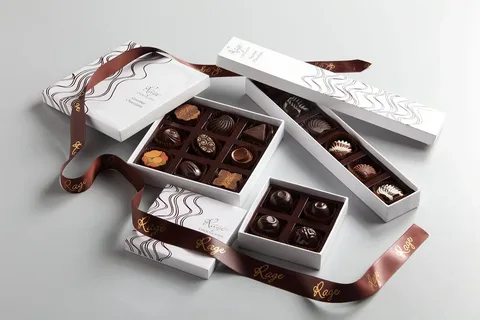In the realm of confectionery delights, few things evoke as much anticipation and delight as a beautifully crafted chocolate box. Beyond just the delectable treats nestled within, the packaging itself plays a pivotal role in enticing customers and enhancing the overall experience. From elegant designs to innovative materials, chocolate box packaging serves as both a canvas for creativity and a practical solution for preserving the delicate contents. In this article, we delve into the art and science behind chocolate box packaging, exploring its evolution, design principles, environmental impact, and the enduring allure it holds for consumers worldwide.
A Brief History: From Humble Beginnings to Artistic Expression
The tradition of presenting chocolate box packaging in decorative boxes dates back centuries, with origins intertwined with the history of chocolate itself. Initially, chocolates were consumed primarily as beverages in ancient Mesoamerican civilizations, with no formal packaging to speak of. However, as chocolate spread to Europe in the 16th century, it underwent transformations both in taste and presentation.
The first semblance of chocolate box packaging emerged in the 19th century, coinciding with the Industrial Revolution and advancements in printing technology. Initially, these packages were simple and utilitarian, primarily serving the purpose of protecting the delicate confections during transport. However, as the demand for chocolates grew and competition intensified, packaging evolved into an art form, with renowned chocolatiers commissioning elaborate designs to distinguish their products.
Design Elements: Crafting an Irresistible Experience
Effective chocolate box packaging is a harmonious blend of aesthetics and functionality. Several key design elements contribute to its allure:
Material Selection: The choice of materials is crucial in conveying quality and luxury. While traditional options like paperboard and cardboard remain popular, newer materials such as recycled paper, biodegradable plastics, and even edible wrappers are gaining traction due to their sustainability and novelty.
Color Palette and Graphics: Vibrant colors and eye-catching graphics can instantly captivate consumers’ attention and evoke emotions. Chocolatiers often leverage imagery associated with indulgence, romance, or nostalgia to create a sense of desire and anticipation.
Shape and Structure: The shape and structure of the box not only impact its visual appeal but also influence functionality and convenience. Innovative designs, such as collapsible boxes or intricate folding techniques, can enhance the unboxing experience and leave a lasting impression on customers.
Typography and Branding: Typography plays a crucial role in communicating brand identity and product information. Elegant fonts and cohesive branding elements contribute to a sense of sophistication and professionalism, reinforcing brand recognition and loyalty.
Environmental Considerations: Balancing Luxury with Sustainability
In recent years, there has been a growing awareness of the environmental impact of packaging, prompting many chocolatiers to reevaluate their practices and embrace sustainable alternatives. From reducing plastic usage to opting for recyclable or compostable materials, efforts are underway to minimize the ecological footprint of chocolate box packaging.
One innovative approach gaining traction is the concept of “zero-waste packaging,” which aims to eliminate unnecessary materials and maximize recyclability. This involves designing packaging solutions that are easily disassembled and sorted for recycling, thereby reducing waste and promoting circularity in the supply chain.
The Psychology of Packaging: Influencing Consumer Behavior
Beyond its functional role, chocolate box packaging exerts a profound psychological influence on consumer behavior. Studies have shown that packaging aesthetics can significantly impact product perception, influencing perceptions of taste, quality, and value. By leveraging color psychology, sensory cues, and branding strategies, chocolatiers can effectively shape consumers’ perceptions and drive purchasing decisions.
Furthermore, the unboxing experience itself plays a crucial role in shaping consumer satisfaction and brand loyalty. A well-designed and thoughtfully executed unboxing experience can evoke feelings of excitement, anticipation, and gratification, fostering positive associations with the brand and enhancing the overall perceived value of the product.
Future Trends: Innovations Shaping the Landscape
As consumer preferences and sustainability concerns continue to evolve, the future of chocolate box packaging is ripe with innovation and possibility. Some emerging trends shaping the landscape include:
Personalization: With advancements in printing technology, personalized packaging is becoming increasingly accessible, allowing chocolatiers to cater to individual tastes and preferences.
Interactive Packaging: Interactive elements, such as QR codes, augmented reality, and NFC tags, are transforming chocolate box packaging wholesale into immersive brand experiences, enabling consumers to engage with the product in new and exciting ways.
Biodegradable Materials: The shift towards biodegradable and compostable materials is expected to accelerate, driven by consumer demand for eco-friendly packaging solutions and regulatory pressures to reduce plastic waste.
Minimalist Design: In contrast to elaborate designs, minimalist packaging is gaining popularity for its simplicity, elegance, and sustainability credentials. Clean lines, subtle branding, and understated elegance appeal to consumers seeking authenticity and transparency in their purchasing decisions.
Conclusion:
In the world of chocolate confectionery, packaging is far more than just a means of preserving and presenting treats—it is a tangible expression of craftsmanship, creativity, and brand identity. From the intricate designs of luxury chocolatiers to the sustainable innovations of eco-conscious brands, chocolate box packaging continues to captivate consumers and shape their perceptions and experiences.
As we navigate an increasingly complex and interconnected world, the role of packaging in conveying values, fostering connections, and reducing environmental impact has never been more vital. By embracing design innovation, sustainability, and consumer-centric approaches, chocolatiers can continue to delight and entice consumers while minimizing their ecological footprint and contributing to a more sustainable future for all.
In the end, whether adorned with elaborate embellishments or stripped down to its minimalist essence, the allure of chocolate box packaging lies in its ability to evoke joy, anticipation, and delight—a fitting tribute to the timeless indulgence of chocolate itself.
